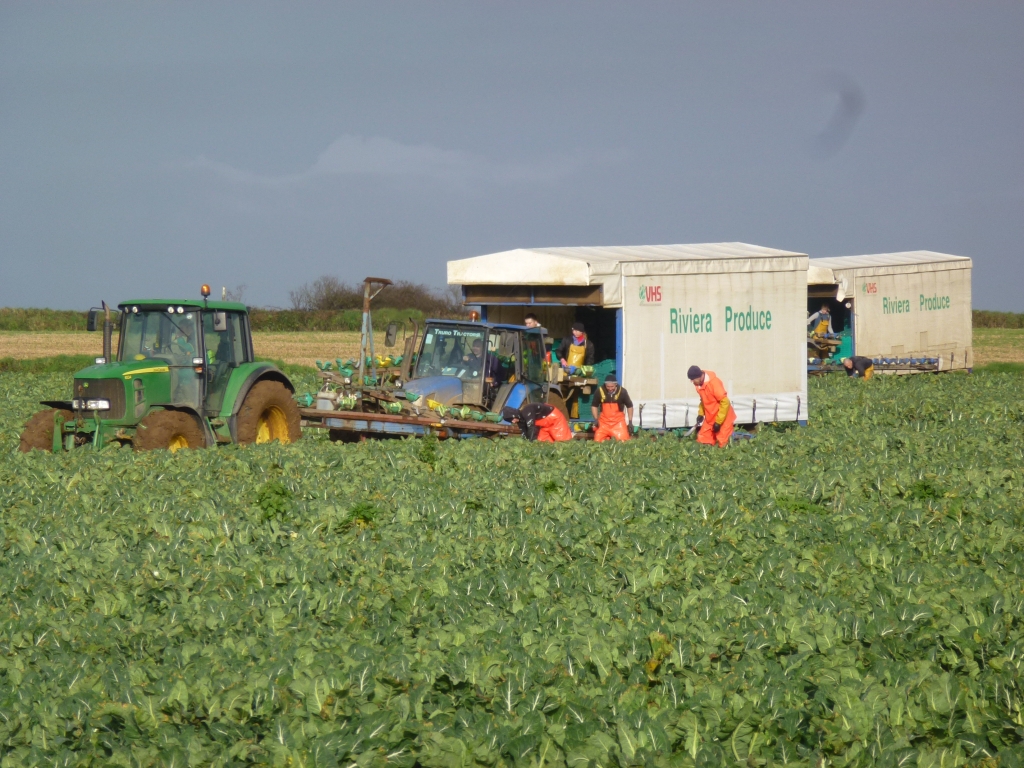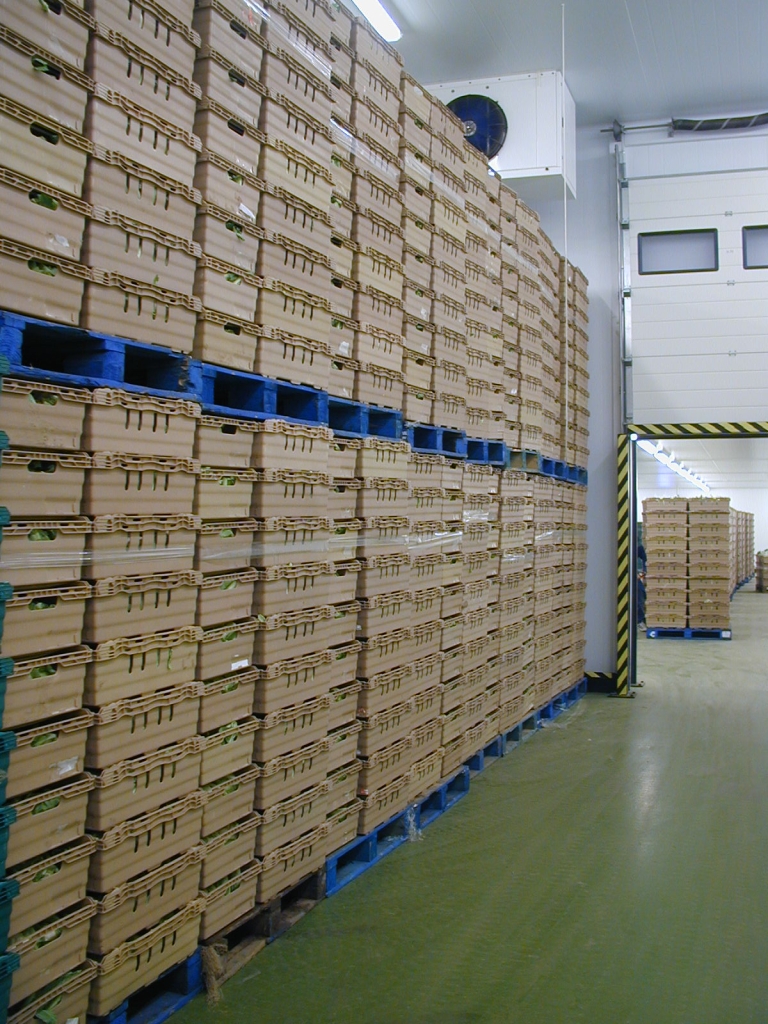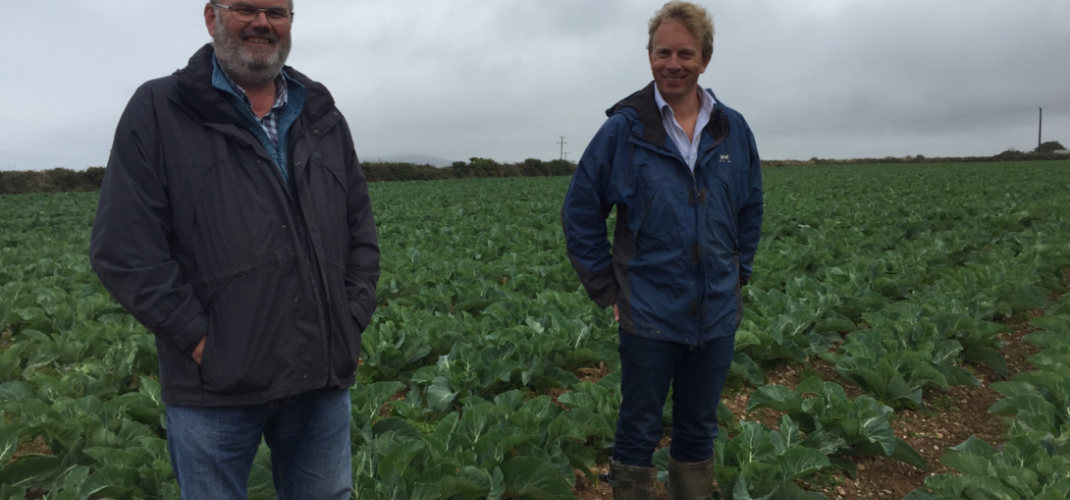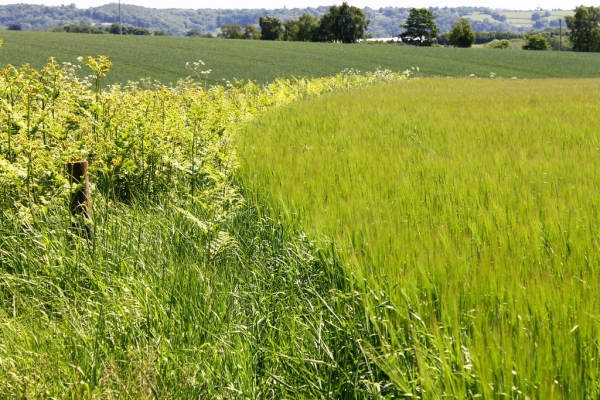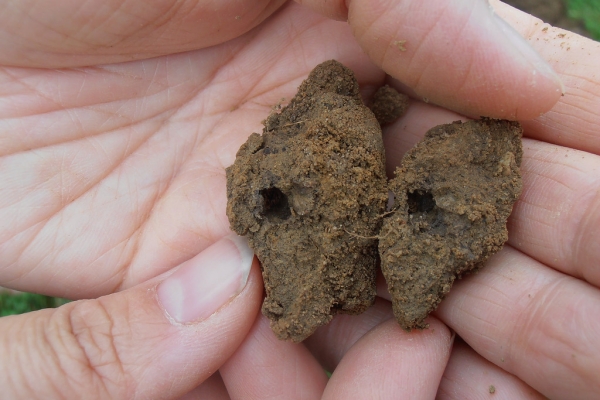David Thomas is farm manager for Riviera Produce Ltd, a LEAF Marque certified business, which farm over 6,500 acres in west Cornwall on managing director David Simmons’ family farm, and also work with 6 other local growers who collectively manage 1000 acres of crops. Riviera Produce Ltd supply many of the UK’s leading supermarket chains.
The main crops they grow are brassicas; cauliflowers, calabrese, spring greens, pointed and savoy cabbages, broccoli and kale (see video for produce and seasonality of harvest details). They have two distinct cauliflower growing seasons; for summer they have 2 or 3 varieties they plant weekly and harvest sequentially. With the winter crop, they have about 30 main varieties and 20 or 30 trials which are are all planted roughly in July, then have different length of days between when they are planted and harvested to ensure continuity throughout the winter.
“We’re very dependent on healthy soil if we don’t have it, your business suffers…. Strip tilling is improving the structure and bringing the worms back.”
In the video below/above, David, with input from Ellis Luckhurst (agronomist and technical manager for Riviera Produce Ltd) talk about:
- Pest, disease and weed control
- Strip tilling to improve soil structure and moisture retention and give a much more even crop (describing what the strip tiller is and how it works…)
- Selecting disease resistant varieties that will give good quality and high yielding crops
- Using cover crops to improve soil structure, biodiversity, nutrient management, and pest control through increasing the amount and variety of beneficial insects. David and Ellis describe some of the key benefits and considerations for cover crop management.
- They are working towards growing more and more disease resistant crop varieties, trying to select those that are of good supermarket quality and give high yields but also looking for tolerance to leaf disease.
- They are greatly reducing their herbicide use (they’ve grown all winter cauliflowers and spring greens this year without the use of residual herbicides), and are increasingly using more mechanical methods and inter row cultivation; strip tilling to create better soil drainage, reduce compaction, and more even crops (GPS system is used to line up planters with the strips).
- They have been growing cover crop mixtures such as phacelia, linseed and clover for the last 3 years. Typically, after cauliflowers have been harvested in July, a cover crop will be lightly disced in, left over the winter then planted in the spring again. They no longer plough; after lightly discing, a Vaderstad CrossCutter breaks up all the dead material, then they run a strip tiller through and start planting behind it.
- They have noticed a big increase in soil biota and beneficials such as hoverflies, ladybirds and bees since doing strip tilling and growing cover crops.
Also see the LEAF IPM Field Veg webinar recording below, which includes Ellis Luckhurst and David Thomas talking about the produce and seasonality of harvest, disease resistant varieties and benefits, and knock on effects of their pest management strategies such as input reduction, fertiliser savings, and increased soil health…

Farmer tips
- Tailor each cover crop to the crop you are going to plant behind it.
- Destroying a cover crop at the right time is key.
- If you’re thinking about going down this route, don’t be afraid to try, don’t stick to what you’ve always done…
All images courtesy of Ellis Luckhurst. All Rights Reserved. Header image shows David (left) with Ellis Luckhurst on the right.


